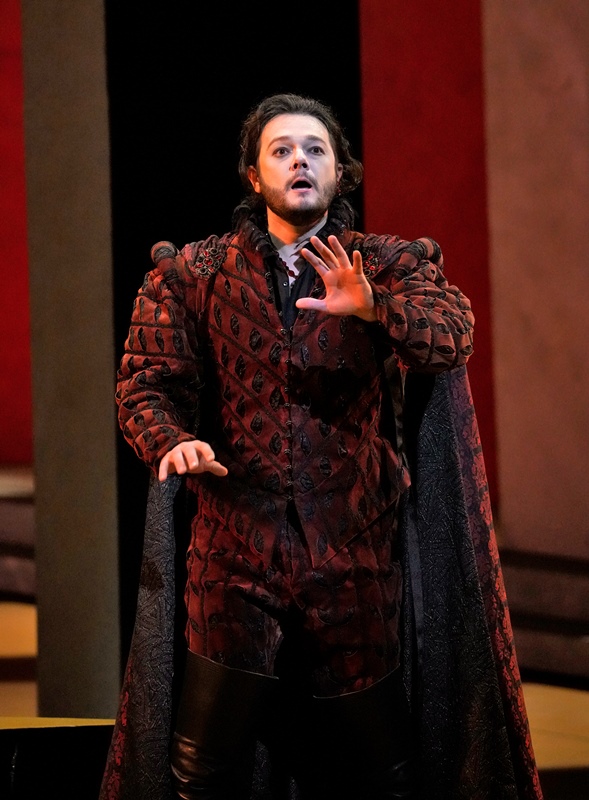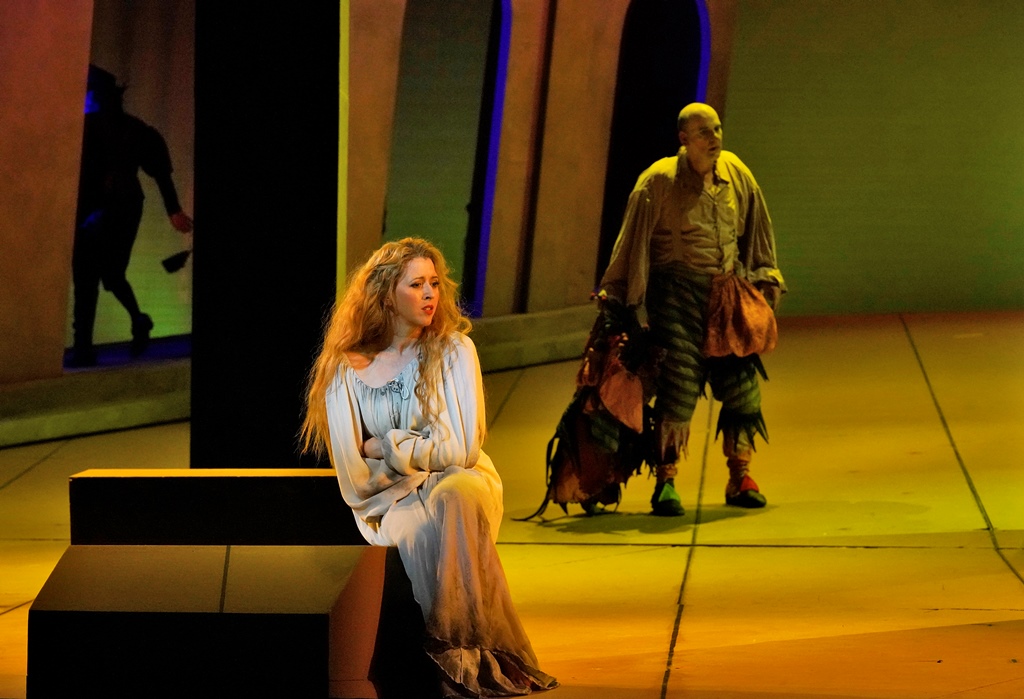LA Opera’s “Rigoletto” Has Great Tunes, Fanciful Costumes and Sizzling Hot Voices
/By Truman C. Wang
5/20/2018
Photo credit: Ken Howard, Los Angeles Opera
“Maledizione” (the Curse), as the opera “Rigoletto” was originally named, might have been a better title for this revival of the 2010 production. The ominous dark clouds have been gathering ever since Leo Nucci, the original Rigoletto, cancelled in March, followed by further casting changes. But like the happy-go-lucky Duke of Mantua in Act II of the opera, the curse was lifted by the opening night and, judging from the winning performance last evening, “Rigoletto” is probably the finest, most compelling show of the current opera season.
First of all, opera is nothing if not about singing, specifically the Italian-style of singing, be it German, French or Russian opera. With “Rigoletto”, despite the cancellation of a star baritone, L.A. Opera has hit vocal gold in a dazzling cast consisting, ironically, of mostly non-Italians.
As the Duke, Mexican tenor Arturo Chacón-Cruz belted out one high C and B after another with great slancio and ringing tone. “Questa o quella” and “La donna è mobile” were lustily delivered, but the surprisingly poetic "Parmi veder le lagrime/I seem to see the tears” made one believe for a moment that this incurable womanizer would change.
Spanish baritone Juan Jesús Rodríguez had the unenviable task of stepping into the shoes of the great Leo Nucci on a short notice but acquitted himself admirably in a searing, deeply poignant performance of a flawed character. As Rigoletto, Mr. Rodriguez conveyed a full range of emotions, from irony (“Pari siamo”) to fatherly love (in duets with Gilda) and blind rage (“Cortigiani”), making one sympathetic to his plight although not condoning his sharp tongue that has made him many enemies and brought onto himself ‘the curse’.
American soprano Lisette Oropesa gave the finest singing of the evening as Gilda, a hopeless romantic-turned-hero who gave her life for her unfaithful lover. Splendid in her lyrical outpourings in duets with the Duke and Rigoletto, Ms. Oropesa had plenty of vocal glamour that could turn from silver into steel at the drop of a hat. Ms. Oropesa’s singing offered an object lesson in the fine art of bel canto. “Caro nome” featured some meltingly beautiful lines and and perfectly-turned trills, and those ravishing pianissimo high notes in the final duet were to die for, literally.
Mezzo-soprano Ginger Costa-Jackson played Maddalena with a heart of gold and a voice of velvet. Bass Morris Robinson was a Sparafucile of booming authority. Baritone Craig Colclough’s Count Monterone delivered chills in the two brief scenes he was in. The L.A. Opera Chorus also deserves high praise for its delightful contributions in the party scenes and the truly spine-chilling humming during the Act II storm.
The entire mise-en-scène of this “Rigoletto” also impresses. Constance Hoffman’s Venetian court jester costumes added much gaiety and colorful contrast to the gloomy backdrop of the drama. The simple but effective unit set by Michael Yeargan serves its multi-purpose well as the grand hall of the Duke’s palace, the street of Rigoletto’s house with a cut-away view of the interior, and the riverbank in the final act flanked by a blood-red colonnade of arches (brilliantly lit by lighting designer Robert Wierzel). Director Mark Lamos is no mundane traffic cop. He has the rare ability to hone in on an action inside a complicated scene and then heighten it for dramatic effect. Examples of the ‘Lamos touch’ abound: Act I, Rigoletto taunting and frolicking around Count Monterone while the party is full swing in the background; Act II, the courtiers’ comedic re-enactment of Gilda’s abduction in front of the Duke; Act III, the mighty storm in which Gilda makes a sign of cross before meeting her demise.
Conductor Matthew Aucoin also conjured up quite a storm in the orchestra pit, moving the plot along in a fast and furious pace, relaxing only for arias and ensembles to unfold and several instrumental solos to shine – the liquid silver flute in “Caro nome”, the poignant cello obbligato in “Cortigiani” and the soulful English horn in the duet “Tutte le feste al tempio”. The L.A. Opera Orchestra played gloriously all night long.
There are three more performances of "Rigoletto" on May 27, 31 and June 3. Come for the great tunes, the fanciful costumes and the sizzling hot voices.
Truman C. Wang is Editor-in-Chief of Classical Voice, whose articles have appeared in the San Gabriel Valley Tribune, the Pasadena Star-News, other Southern California publications, as well as the Hawaiian Chinese Daily.




